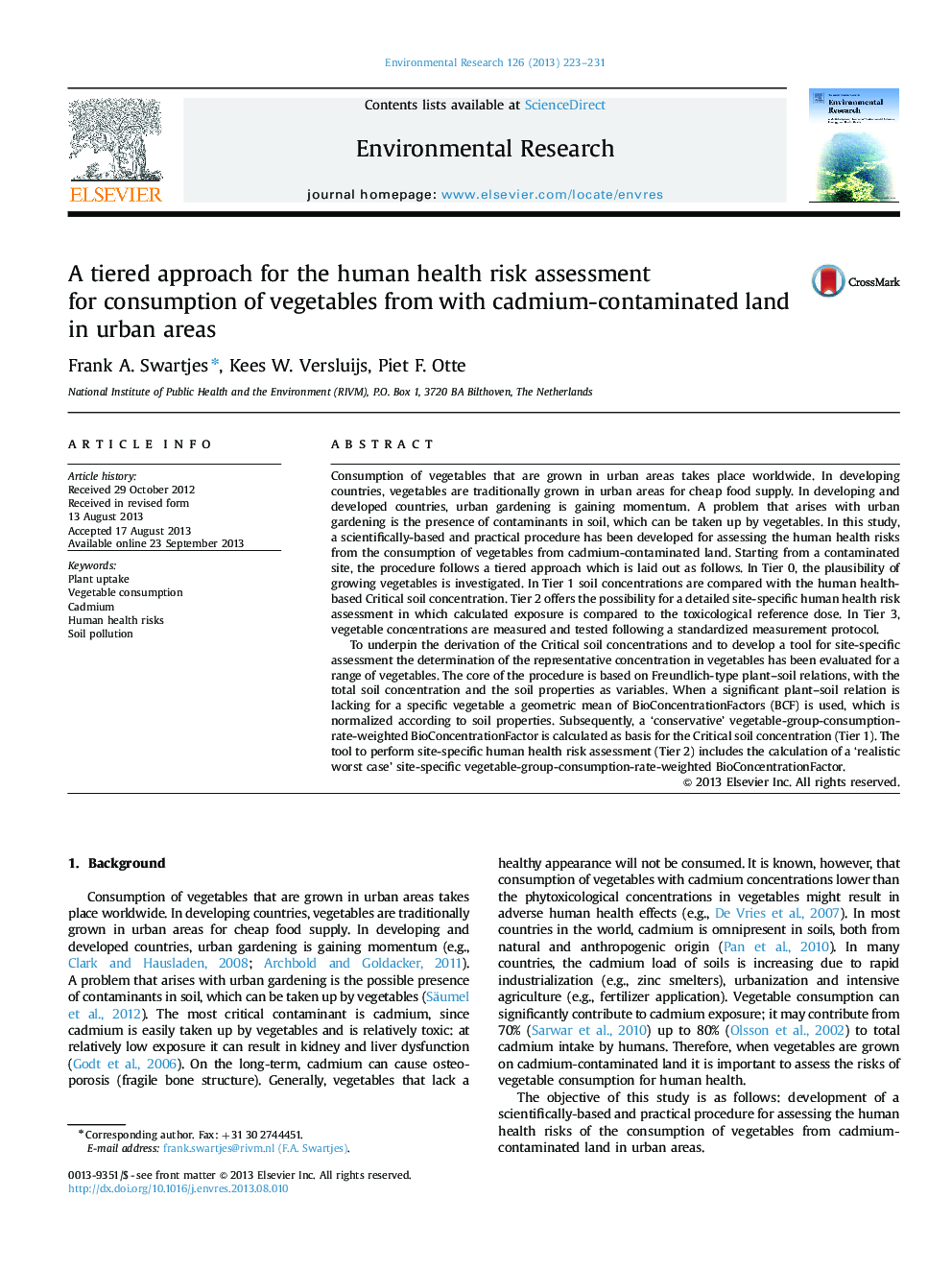| Article ID | Journal | Published Year | Pages | File Type |
|---|---|---|---|---|
| 6353187 | Environmental Research | 2013 | 9 Pages |
Abstract
To underpin the derivation of the Critical soil concentrations and to develop a tool for site-specific assessment the determination of the representative concentration in vegetables has been evaluated for a range of vegetables. The core of the procedure is based on Freundlich-type plant-soil relations, with the total soil concentration and the soil properties as variables. When a significant plant-soil relation is lacking for a specific vegetable a geometric mean of BioConcentrationFactors (BCF) is used, which is normalized according to soil properties. Subsequently, a 'conservative' vegetable-group-consumption-rate-weighted BioConcentrationFactor is calculated as basis for the Critical soil concentration (Tier 1). The tool to perform site-specific human health risk assessment (Tier 2) includes the calculation of a 'realistic worst case' site-specific vegetable-group-consumption-rate-weighted BioConcentrationFactor.
Related Topics
Life Sciences
Environmental Science
Health, Toxicology and Mutagenesis
Authors
Frank A. Swartjes, Kees W. Versluijs, Piet F. Otte,
